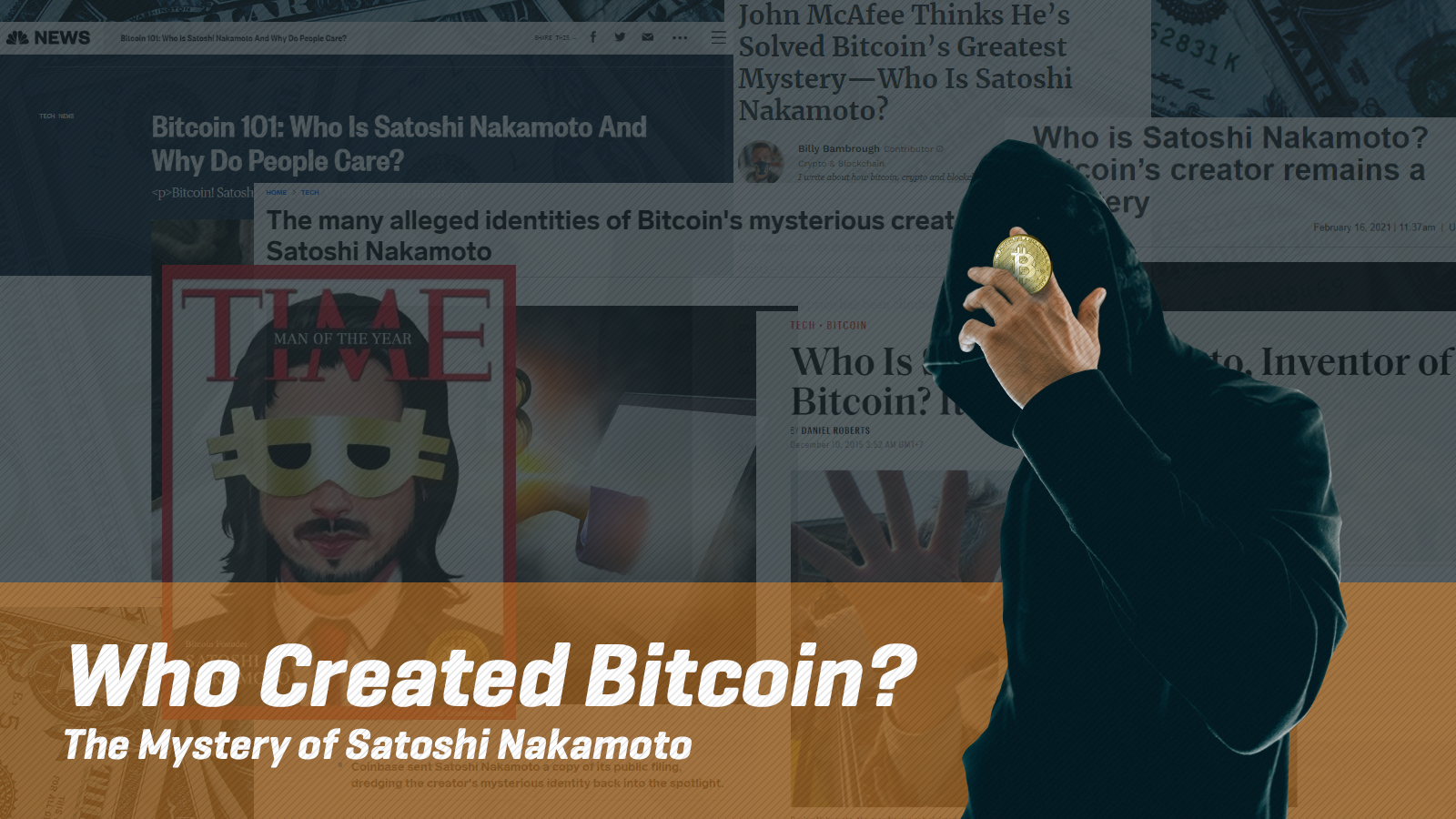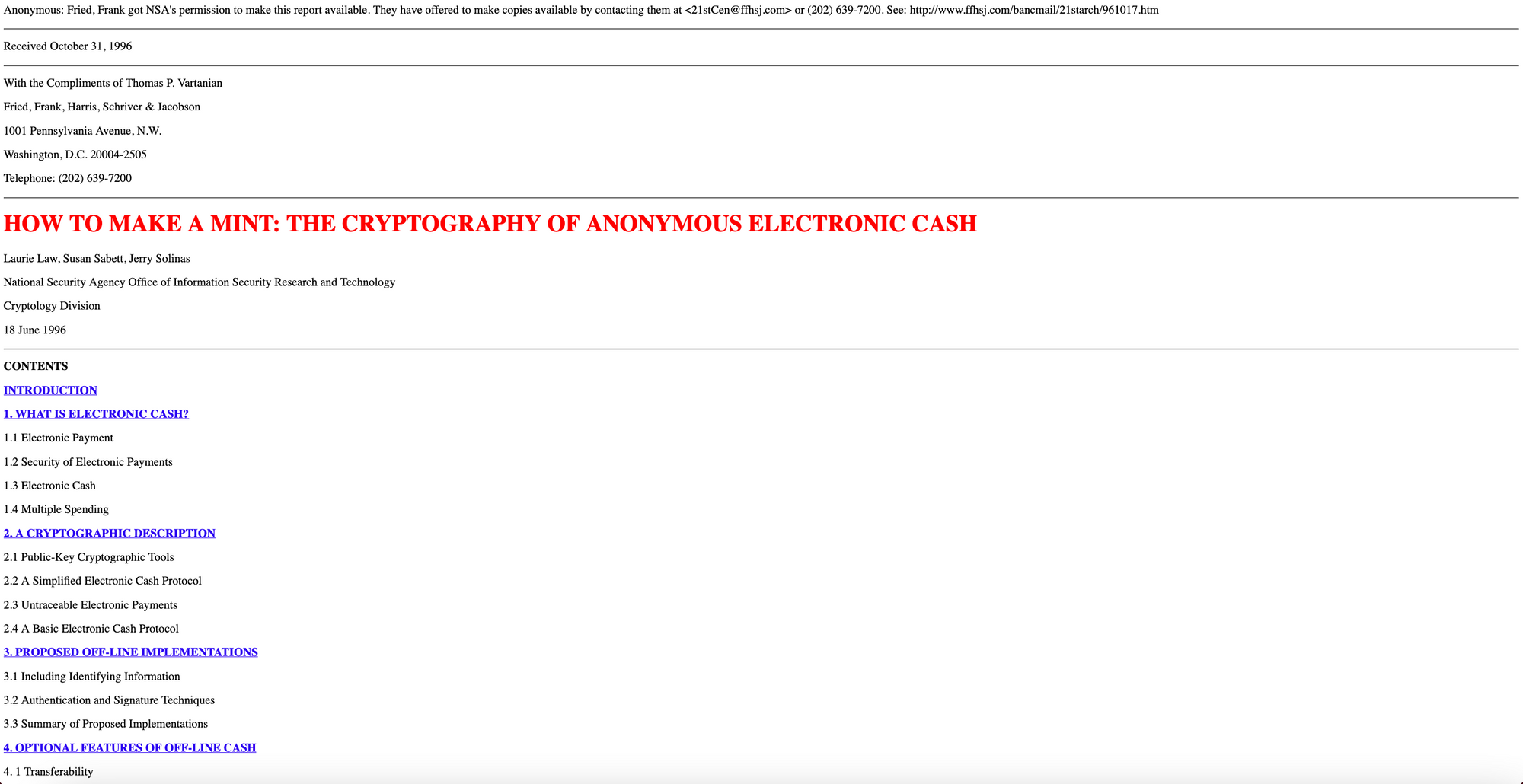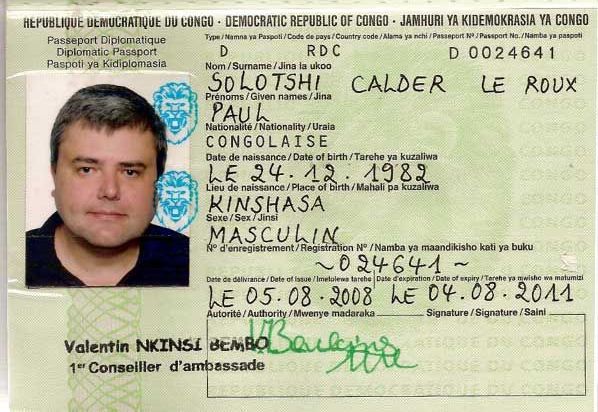Who Created Bitcoin? The Mystery of Satoshi Nakamoto
Many have tried to identify the creator of Bitcoin, but he/she/they still remain elusive.

Unmasking Satoshi Nakamoto and answering the question 'who created Bitcoin?' is the biggest mystery of modern times, and it's even more baffling given that they left no trace of their identity behind on the internet.
What do we really know about Satoshi Nakamoto? Well, according to Satoshi's verified P2P online profile, their birthday is April 5, 1975, suggesting they recently turned 46 years old.
What else do we know with certainty about the Bitcoin creator?
- Satoshi was heavily inspired by the 'cypherpunks', a group of activists advocating for strong cryptography and privacy-enhancing technologies to facilitate social and political change. The movement was heavily centered around California and gained momentum in the early 1990s. Satoshi knew of many popular members such as David Chaum of Digicash, Hal Finney, Adam Back and others. Some even suggest Satoshi is someone within the cypherpunk community,
- The domain name bitcoin.com was registered in August 2008 and the white paper was released in October 2008,
- An early version of Bitcoin's code had a P2P market and virtual poker game,
- Satoshi wrote in perfect British English (spelling "colour" instead of "color" and using British phrases such as "bloody hard"). Also, a headline from the British newspaper The Times was embedded into the first Bitcoin block,
- Satoshi was proficient in C++ coding, economics and cryptography,
- Satoshi was mostly active on bitcointalk during the hours of 5pm-10pm (British Summer Time). Satoshi's code contributions and comments were more frequent in the summer and winter months, while tapering off in spring and at the end of the year, suggesting Bitcoin's creator may be an academic,
- Satoshi mined Bitcoin in the early days, and is estimated to hold as much as 600,000 BTC (which has never been moved),
- Satoshi's last email communication was on April 23, 2011, telling Bitcoin developer Mike Hearn that he was “moving onto other things”,
In this article, we list the candidates that have been put forward as Satoshi Nakamoto and potentially being behind the creation of Bitcoin:
NSA/Rogue Government Entities
The NSA put out their own paper for a digital currency back in 1996. Many of the elements of Bitcoin are there and looking at the screenshot below, we can see the paper was received October 31, 1996. The Bitcoin white paper was also released on the same day (October 31), but 12 years later. Perhaps some rogue elements in the government created Bitcoin and decided to do the world a favour!

While Bitcoin resulted from decades of research and work, the impeccable timing of the cryptocurrency's launch during the Global Financial Crisis in 2007-2008 leads some people to suspect that elements of the government were behind it. Some skeptics think digital currency could be the perfect Trojan horse to lead us into a cashless society with a traceable, one world currency, since all transfers can be tracked on Bitcoin's transparent blockchain.
For instance, one skeptic is Natalya Kaspersky, CEO of the InfoWatch group of companies and co-founder of Kaspersky Lab. In 2018, Kaspersky delivered a presentation with one slide reading, "Bitcoin is a project of American intelligence agencies, which was designed to provide quick funding for US, British and Canadian intelligence activities in different countries." Although no evidence was presented to back up this claim.
The major problem with the 'NSA created Bitcoin' theory is that the work required to build Bitcoin was a natural progression from what the cypherpunks achieved, and the cryptocurrency has great potential to threaten the status quo.
Hal Finney
Hal Finney was the recipient of the first ever Bitcoin transaction, the first person to Tweet about Bitcoin and the first person to help Satoshi with the idea once it was posted on the Cryptography Mailing List.
Running bitcoin
— halfin (@halfin) January 11, 2009
Some people think that Satoshi and Hal are the same person which would make sense given Finney's background in encryption and the cypherpunk movement. Hal Finney was part of Phil Zimmerman's Pretty Good Privacy (PGP) Corporation as a developer. PGP was one of the first projects that made public-key cryptography accessible to everyone, allowing individuals to communicate securely on the internet.
Years later, in 2004, Finney created Reusable Proof of Work (RPOW), a building block that Satoshi would later incorporate into Bitcoin mining. Hal continued to program until his unfortunate passing away in August 2014, working on bcflick which was a piece of software that used Trusted Computing to secure Bitcoin wallets. The disapperance of Satoshi lines up nicely with Finney's retirement from PGP Corporation in 2011, which is the same year in which the Bitcoin creator handed over control of the project to Gavin Andressen.
Another strange coincidence is that Hal Finney lived in Temple City, California, a few blocks away from a Japanese-American man named Dorian Satoshi Nakamoto. Nakamoto is a retired physicist who was mistaken for the creator of Bitcoin in a media frenzy during March 2014.
One theory put forward is that Hal may have used Satoshi Nakamoto as a pseudonym to personalise the creator of Bitcoin while remaining anonymous himself. It's also worth noting that Temple City has a population of around 36,000 people. What are the chances that the creator of Bitcoin shared the same name as someone living in the same city as Hal?
Despite the strong links between Hal and Satoshi, he denied being the digital currency's creator. On the identity of Bitcoin's creator, Hal stated, "Today, Satoshi's true identity has become a mystery. But at the time, I thought I was dealing with a young man of Japanese ancestry who was very smart and sincere. I've had the good fortune to know many brilliant people over the course of my life, so I recognize the signs...", which leads us to our next Satoshi candidate.
Shinichi Mochizuki
While Shinichi Mochizuki is not that young, he certainly is a man of Japanese ancestry who is brilliant and very smart, as Hal Finney remarked. Mochizuki obtained a Bachelor’s degree, and then a PhD, in mathematics. He is currently a professor at Kyoto University who focuses purely on research and, unlike most university professors, does not lecture at all.
The first person to link Satoshi to Shinichi Mochizuki was Hypertext co-founder, Ted Nelson, who stated in 2013 that he believes the Japanese mathematician and number theorist is the creator of Bitcoin.
Co-founder of Hypertext, Ted Nelson, explains why he thinks Shinichi Mochizuki is Satoshi Nakamoto.
First, Mochizuki is of Japanese origin, which fits with the profile of Satoshi (who claims to be from Japan). Another similarity with the Bitcoin creator is that Mochizuki has also submitted original ideas to the internet rather than to the conventional academic channels. After submitting his works, he's taken a step back and moved onto other things.
For example, he published an important conjecture in mathematics in August 2012, known as the ABC Conjecture. As a result, Mochizuki pretty much invented a whole new field of mathematics, leaving other academics dumbstruck. There are some parallels with Bitcoin here, particularly if we look at what Satoshi said about explaining the digital currency in its early stages:
“Sorry to be a wet blanket. Writing a description for this thing for general audiences is bloody hard. There’s nothing to relate it to.”
Similarly with the ABC Conjecture, no one can figure it out and Mochizuki hasn’t bothered to explain himself. He didn't submit his findings to a mathematics journal but just dropped it on the internet, and then moved on, mirroring what Satoshi did with Bitcoin (in their last email, they said they were "moving onto other things").
You may be thinking, wait a minute, he's Japanese, how did he have a perfect grasp of the English language, let alone British English? One explanation could be that Mochizuki was the class salutatorian at Princeton, meaning he was the second-highest-ranked graduate of the entire class. It also suggests he had a firm command of the English language which Satoshi displayed in his writings.
Satoshi’s disappearance and reluctance to come forward also fits nicely with Japanese culture, which emphasises a strong work ethic and humility. In stark contrast to Western values, in Japan it is preferable to work hard and not make a big fuss about your achievements. In fact, it is a much more group-oriented, rather than individual-oriented, society.
However, there are no links between Mochizuki and the cypherpunks, raising some doubts whether he is Bitcoin's creator. The work of Bitcoin relied heavily on previous advances, such as Reusable Proof of Work (RPOW), HashCash, b-money and bit gold, and it is not clear whether Mochizuki was aware of this work at the time Bitcoin was being built.
Nick Szabo
Nick Szabo is a computer engineer and legal scholar who pioneered the concept of smart contracts in the mid-1990s. Szabo also created bit gold in 1998, a predecessor to Bitcoin that was never launched, but was the closest anyone had gotten to creating a peer-to-peer digital currency until that point. The digital currency scheme was published on his blog, Unenumerated, in 2005.
However, if you look at the page on his blog, we see the permalink implies the article was published in December 2005 (3 years before the Bitcoin white paper), but the timestamp of the article was changed form December 29, 2005 to December 27, 2008. This peculiar fact possibly hints at Szabo changing the date to make it seem as if bit gold had come after bitcoin. It doesn't seem like a mistake, so why would have Szabo changed the timestamp of his article all those years later?

A screenshot of Szabo's blog. The permalink shows the article about bit gold was published in 2005, however, the timestamp has been altered to a date after the Bitcoin white paper was released.
Szabo is known for his Libertarian outlook and wariness of governments, which likely stems from his childhood in Hungary, where his father fought against communist rule. It is precisely this background which would make one deeply appreciate a peer-to-peer, decentralized currency that could not be controlled or devalued by the government.
Dominic Frisby made the case for Szabo as the person behind Satoshi in his book Bitcoin: The Future of Money. One interesting fact highlighted in the book is that Szabo worked with David Chaum on DigiCash, another Bitcoin predecessor that unfortunately didn’t gain traction.
Another piece of evidence in favour of Szabo as Satoshi is the similar writing style between the two. The bit gold creator even used some of the exact same terms found in the Bitcoin white paper years prior, such as "trusted third party". In 2014, researchers from Aston University in England analysed the similarities of the writings of Satoshi and several candidates, and they claimed Szabo had the closest match. Dr. Grieve, a lecturer in Forensic Linguistics who led the study, commented:
“The number of linguistic similarities between Szabo’s writing and the Bitcoin paper is uncanny, none of the other possible authors were anywhere near as good of a match. We are pretty confident that out of the list of people regularly referred to as possibilities, Nick Szabo is the main author of the paper, though we can’t rule out the possibility that others contributed.”You can read the full study here.
However, Szabo has always denied being Bitcoin’s elusive creator.
Paul Le Roux
Paul Calder Le Roux was identified as a Satoshi candidate in early 2019 by journalist Evan Ratcliff. Le Roux was a former cartel boss, DEA informant, and software programmer, but is now in jail after being arrested in 2012 for charges such as drug trafficking, hacking and money laundering.
The first breadcrumb leading to Le Roux came from the Kleiman v. Wright lawsuit. A bit of backstory first: Craig Wright and Dave Kleiman were business partners who mined bitcoin together, before Kleiman died in April 2013. The lawsuit is all about the family trying to reclaim the bitcoins that belong to Kleiman from Craig Wright. In the lawsuit, Wright filed a motion for a protective order, which contained lots of redactions.
However, something was left unredacted: a link to Paul Le Roux's Wikipedia page. The link found in the footnote set speculation alight on the internet, with some people linking Le Roux to Satoshi. Following this revelation from the Kleiman v. Wright lawsuit, someone on 4Chan posted a picture of Le Roux's Democratic Republic of Congo diplomatic passport. Notice the name 'Solotshi', which sounds very similar to Satoshi:

One of the main reasons it makes sense to consider Le Roux as a Satoshi candidate is that he is the man behind Encryption for the Masses (E4M), a disk encryption software built in the late 1990s. E4M was announced to the Cryptography Mailing List in 1999, and a website was launched to release the open source code.
Notice the parallels with Bitcoin, which was also released on the internet with open source code and the creator requested help to improve it. Additionally, Le Roux was proficient in C++ language, which was used to build Bitcoin, so he certainly has the skills required to be considered a Satoshi candidate.
Another factor is the disappearance of Satoshi and Le Roux's arrest in 2012. Satoshi was clearly against governments, and when WikiLeaks mooted taking bitcoin as donations, he warned against this. When Gavin Andresen said he was going to give a talk about Bitcoin at the CIA in 2011, Satoshi never responded. Exactly the reaction you'd expect from the head of an international cartel.
Le Roux would've also benefitted massively from the invention of Bitcoin, as presumably he could've continued his illicit operations without worrying about how to launder or hide his money. Although there's no evidence he laundered money through bitcoin, he was arrested before the market matured enough for him to do so anyway.
Apart from the coincidental disappearance of Satoshi and Le Roux’s 2012 arrest, the mention of him in the Kleiman v. Wright lawsuit, and his C++ skills, not much else links Le Roux and Satoshi together though.
Read more about the case put forward for Le Roux as Satoshi Nakamoto here.Adam Back
Youtuber Barely Sociable released a three-part documentary on Bitcoin’s creator in January 2020, called The Most Elusive Person on the Internet. It's an interesting watch, with the documentary claiming that Adam Back, CEO of Blockstream and creator of HashCash, is Satoshi Nakamoto.
Many of the arguments used for this claim include:
- Adam Back has a PhD in Distributed Systems, the perfect background to build a peer-to-peer, decentralized currency. He's also the creator of HashCash (a vital component for the invention of bitcoin), was part of the cypherpunks movement, and has been interested in creating digital cash since the mid-1990s.
- No emails between Adam Back and Satoshi Nakamoto have ever been made public. Back has always maintained that he deleted any correspondence with Satoshi to protect his identity. Furthermore, Satoshi said Adam Back pointed him to Wei Dai, which suggests a previous correspondence between Back and Satoshi (that has never been verified publicly).
- The YouTube documentary also highlights that Adam Back had little going on in his work life prior to Bitcoin - suggested he was busy working on the digital currency (perhaps with other people).
- Adam Back is British, uses British English in his writings, and uses a double space after each period - matching Satoshi's typing style.
To find out other clues about who Satoshi may be and how the arguments stack up for Adam Back being Bitcoin's creator, you can watch three-part series below, beginning with part 1:
Part 1 of 'The Most Elusive Identity on the Internet'. The three-part series suggests Adam Back is Satoshi Nakamoto and provides arguments for this claim.
Satoshi Remains Elusive
Who is Satoshi Nakamoto? It's the biggest mystery of modern times, and the case of identifying Bitcoin's creator remains wide open. Our list is by no means exhaustive, but we have covered the most likely candidates.
We all desire to know who Satoshi is because they are likely sitting on a big stash of bitcoins, which may never move, may be lost forever or could be used in the future for a particular purpose that noone has foreseen yet.
Another theory is that because of the brilliance of Bitcoin, which combined many fields to revolutionise the concept of money, it's unlikely that it can be attributed to a single person. Therefore, Satoshi Nakamoto is more likely to be a group of people, each well-versed in their respective fields to combine computer science, cryptography and economics together in such a successful way.
Who knows, maybe one (or many) of the people in this list could've been part of that group?
-The Rollbit Team